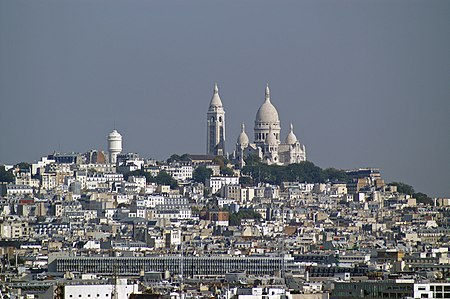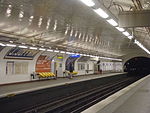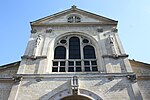18th arrondissement of Paris

The 18th arrondissement of Paris (XVIIIe arrondissement) is one of the 20 arrondissements of the capital city of France. In spoken French, this arrondissement is referred to as dix-huitième. The arrondissement, known as Butte-Montmartre, is located on the right bank of the River Seine. It is mostly known for hosting the district of Montmartre which contains a hill known for its artistic history, the Bateau-Lavoir where Pablo Picasso, Georges Braque, and Amedeo Modigliani lived and worked in early 20th century, the house of music diva Dalida, the Moulin Rouge cabaret, other historic features, and the prominent Sacré Cœur basilica which sits atop the hill. The 18th arrondissement also contains the North African and African district of Goutte d'Or which is famous for its market, the marché Barbès, where one can find various products from the African continent.
Excerpt from the Wikipedia article 18th arrondissement of Paris (License: CC BY-SA 3.0, Authors, Images).18th arrondissement of Paris
Rue Duc, Paris Quartier de Clignancourt (Paris)
Geographical coordinates (GPS) Address Nearby Places Show on map
Geographical coordinates (GPS)
| Latitude | Longitude |
|---|---|
| N 48.892222222222 ° | E 2.3444444444444 ° |
Address
Mairie du 18e arrondissement (Mairie du XVIIIème; Mairie du 18ème)
Rue Duc
75018 Paris, Quartier de Clignancourt (Paris)
Ile-de-France, France
Open on Google Maps









